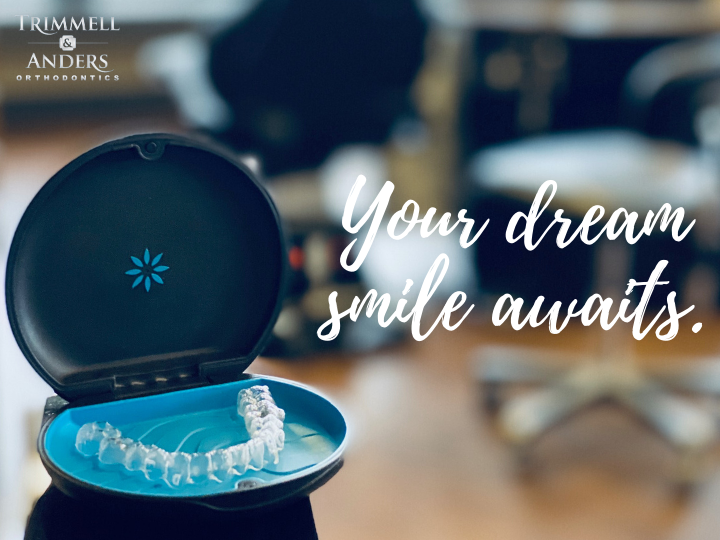Is it time to see the Orthodontist? Did your teen’s best friend just get braces? Did your dentist recommend an evaluation?
 Once your teen’s malocclusion has been diagnosed, your orthodontist may provide the option to use traditional braces or clear aligners, like Invisalign, to correct the teeth. Both braces and Invisalign clear aligners can move teeth, but here are some things to consider when choosing which treatment option is best for your teen:
Once your teen’s malocclusion has been diagnosed, your orthodontist may provide the option to use traditional braces or clear aligners, like Invisalign, to correct the teeth. Both braces and Invisalign clear aligners can move teeth, but here are some things to consider when choosing which treatment option is best for your teen:
The diagnosis.
The severity and type of malocclusion will dictate what your doctor offers as a treatment option. The more severe or difficult the treatment, the less likely it is that Invisalign is an option. Invisalign works best for spacing or gaps, mild to moderate crowding, and mild to moderate bite correction. When a diagnosis includes more serious issues such as severe crowding, crossbite, overbite, or underbite, Invisalign will likely not produce as good of a result as traditional brackets.
Types of tooth movement.
Certain tooth movements are done best in braces compared to Invisalign. This is mostly due to the braces being glued on the teeth while Invisalign wraps around the teeth. For example, braces are better than Invisalign for correcting rotated teeth. Imagine that stubborn jar lid you angrily try to open in the kitchen: as you try to grip it, your hands just slip around and around; but if you had a lever, it would be easy to turn.
Hygiene.
Keeping the teeth clean is of paramount importance during orthodontic treatment. Damage to the teeth and gums can occur if the teeth are not cared for properly! In addition to excellent care at home, every patient is advised to see their dentist for regular cleanings every 3-6 months during treatment. While both treatment options still require excellent oral hygiene and regular dental visits, cleaning the teeth with clear aligners is easier than traditional braces since the aligners can be removed.
Compliance.
It is simple: braces are glued on and working 24 hours per day. With Invisalign, the trays have to be worn as close to 24 hours per day as possible to achieve movement—simply wearing the trays to sleep will not achieve the desired results and will extend treatment time. The aligners go everywhere you go and are taken out when you eat and when you brush your teeth. Remembering to wear the aligners full time and keeping track of them can be difficult. Invisalign requires excellent patient motivation and responsibility.
Soreness.
Moving teeth is what creates discomfort in the orthodontic process. Since both braces and Invisalign move teeth—you will experience discomfort with both. Most of the soreness occurs in the first few days of treatment when both the teeth and mouth are getting used to the new visitors. When the braces are adjusted, a degree of that soreness returns. Similarly, when you put in a new Invisalign tray, a degree of soreness returns.
Emergency visits.
Emergency visits with both braces and Invisalign are far and few if cared for properly. Overall, Invisalign, if worn properly, can allow for longer time between visits and less emergency visits overall when compared to traditional braces.
All orthodontic treatment is custom to the needs of your teen; the type of appliance you choose should also reflect what is the best fit for them. Doing so will create the most ideal circumstances for treatment success and desired results.
Click here for more information.